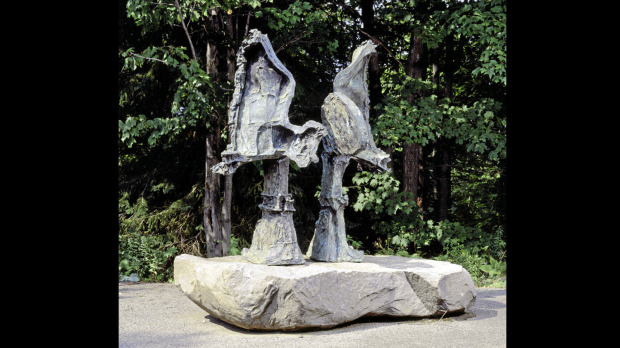Thursday, August 04, 2011 -  Stolen Art Recovered
Stolen Art Recovered
 No comments
No comments
 Stolen Art Recovered
Stolen Art Recovered
 No comments
No comments
Art Crime Roundup: Riopelle Statues Recovered
 |
| Damaged Riopelle sculptures recovered (Photo by The Canadian Press) |
by Catherine Schofield Sezgin, ARCA Editor-in-Chief
VANCOUVER, CANADA - The August 3 edition of Canada's national newspaper, The Globe and Mail, delivered to most hotels, homes and newsstands in "The World's Most Livable City", lead off its Globe Index on the front page highlighting an article on Page 3:
'Those guys were imbeciles' Art gallery owner Simon Blais on the metal thieves who tried to make off with a 1,000-pound bronze sculpture by Canadian artist Jean-Paul Riopelle in Montreal. The artwork was recovered hours later, broken but salvageable.
On Page 3, under the headline "'Dumb thieves' botch Riopelle heist", journalist Ingrid Peritz reported from Montreal:
A trio of hapless thieves who tried to abscond with a $1-million sculpture by famed Canadian artist Jean-Paul Riopelle ended up ditching their treasure instead in the Quebec woods. It was retrieved - broken but salvageable.
You can also read more on art theft in Canada in Jon Hembrey's article, "Global art theft: From Rembrandt to Riopelle", on CBC News online.
Today I will be visiting The Museum of Anthropology, the site of a May 2008 theft where 12 pieces of gold artworks by Bill Reid were stolen and later recovered. You can see Noah Charney's piece on the theft published in 2008 in The National Post here. Since the robbery, the museum has undergone a renovation and expansion.







